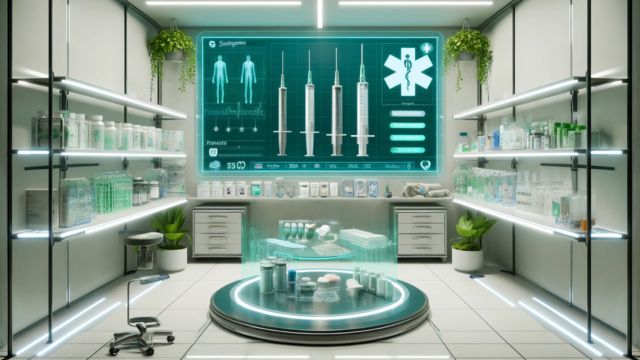In the realm of healthcare, sustainability is becoming a need rather than only a fad. The healthcare sector has to also take environmental impact into account given growing demand for medical goods. From non-biodegradable trash to single-use plastics, conventional medical tools sometimes have major environmental impact. Sustainable medical supplies are, however, becoming increasingly prevalent as more healthcare professionals adopt environmentally friendly methods. Not only are these products good for the earth, but they also give medical professionals a chance to increase their efforts at corporate social responsibility (CSR).
Why Sustainable Medical Supplies Matter
Every day, healthcare facilities produce a lot of garbage; most of it is not biodegradable. Single-use medical items including gloves, gowns, syringes, and packing materials account for a substantial amount of this garbage. Studies indicate that the usage of non-environmentally friendly products causes healthcare systems all around to generate 10% of carbon emissions. This helps one to greatly lower the carbon footprint of medical facilities by switching to greener substitutes.
Not only benefits the surroundings, but this also fits patient expectations. Patients of today are growingly worried about sustainability. Many people would rather be cared for at establishments aware of their environmental influence. Furthermore, governments and regulatory authorities are starting to enforce more stringent environmental rules on medical professionals, which emphasises the need of using green techniques even more.
Types of Eco-Friendly Medical Supplies
When transitioning to sustainable medical supplies, there are several options available across various categories:
1. Biodegradable Gloves and PPE (Personal Protective Equipment)
Traditionally, disposable gloves and personal protective equipment (PPE) are made from petroleum-based plastics such as PVC or latex, both of which contribute to significant environmental damage. However, today there are biodegradable gloves made from natural rubber latex, nitrile, or plant-based materials. These alternatives break down faster in landfills, reducing environmental harm. Similarly, PPE such as face masks and gowns are now available in biodegradable and compostable materials.
2. Eco-Friendly Packaging
Medical packaging is another area where sustainability is making an impact. Traditional medical packaging is often made from plastic that ends up in landfills. The good news is that many companies are now offering sustainable alternatives, such as biodegradable or recyclable packaging materials. This helps reduce the amount of non-recyclable waste generated by healthcare providers.
3. Reusable Medical Devices
While single-use medical devices are commonplace in healthcare, a growing number of hospitals and clinics are turning to reusable medical devices. These can be sterilized and used multiple times, significantly reducing waste. Examples include surgical instruments, thermometers, and stethoscopes. Reusable devices not only contribute to sustainability but also offer long-term cost savings.
4. Sustainable Disposables
Another significant category within eco-friendly medical supplies is the move towards more sustainable disposables. For example, there are now disposable surgical drapes made from sustainable, biodegradable fabrics. In the past, most disposable medical fabrics were made from non-biodegradable materials, but this shift has proven effective in reducing waste without compromising patient safety.
5. Eco-Friendly Sterilization Products
Sterilization is a crucial process in healthcare, and it’s also an area that can benefit from more sustainable practices. The use of eco-friendly sterilization products, such as biodegradable sterilization pouches and reusable sterilization containers, can significantly reduce the environmental impact of the sterilization process.
6. Sustainable Sharps Disposal
Sharps disposal is another area of concern for medical facilities. Traditional sharps containers are often made from non-recyclable plastic, adding to the waste burden. However, some manufacturers are now producing sharps disposal containers made from recyclable materials, helping to reduce medical waste while ensuring safe disposal of hazardous materials.
Benefits of Using Eco-Friendly Medical Supplies

The adoption of sustainable medical supplies offers numerous benefits for healthcare providers, including:
1. Reduced Environmental Impact
The primary benefit is the reduction of waste and pollution. By opting for biodegradable, recyclable, and reusable medical supplies, healthcare facilities can lower their carbon footprint, waste generation, and reliance on non-renewable resources.
2. Cost Savings
Although eco-friendly medical supplies may sometimes come at a higher initial cost, the long-term savings can be significant. For instance, reusable devices and eco-friendly packaging often lead to lower costs in waste disposal and material procurement over time.
3. Improved Public Image and Patient Trust
Sustainability is becoming an important value for patients. Healthcare facilities that embrace sustainable practices enhance their reputation and trust among patients. This can lead to increased patient loyalty and even attract new patients who prioritize environmental responsibility.
4. Compliance with Regulatory Requirements
As governments across the world are enacting more stringent environmental regulations, healthcare providers must comply with these laws. By switching to eco-friendly medical supplies, healthcare facilities can ensure they remain compliant with evolving environmental standards.
How to Transition to Eco-Friendly Medical Supplies
Transitioning to eco-friendly medical supplies doesn’t have to be an overwhelming task. Here are some steps to consider:
-
Assess Your Current Supply Chain: Evaluate the materials and supplies you currently use. Identify areas where eco-friendly alternatives could be introduced, such as packaging, PPE, and disposable items.
-
Set Clear Goals: Establish sustainability goals for your healthcare facility, including the reduction of waste, energy consumption, and water use.
-
Partner with Green Suppliers: Work with manufacturers that offer sustainable alternatives to traditional medical supplies.
-
Educate Your Team: Ensure that your staff is well-informed about the importance of using eco-friendly supplies and the impact they can have on both the environment and patient care.
Conclusion
Improving the environmental impact of healthcare depends critically on the change towards sustainable medical supplies. Healthcare providers can help to create a better future by adopting environmentally friendly choices, thereby enhancing patient care, lowering costs, and raising regulatory compliance. The healthcare sector has an obligation to implement sustainable practices; one approach to significantly contribute to this change is the switch to environmentally friendly products.








